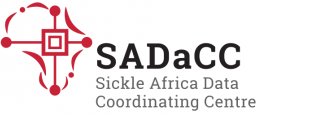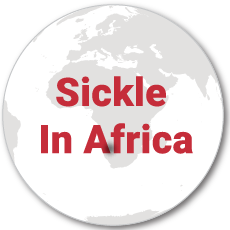This website is for the Sickle In Africa consortium which is made up of the Sickle Africa Data Coordinating Center (SADaCC), Sickle Pan African Research Consortium (SPARCO) and the Sickle Pan-African Network (SPAN).
This website is funded by the National Heart, Lung, And Blood Institute of the National Institutes of Health under Award Number U24HL135600. The content is solely the responsibility of the authors and does not necessarily represent the official views of the National Institutes of Health.
Sickle Cell Disease (SCD) is most common in people from Mediterranean, Middle Eastern, Caribbean, North, Central, and South American countries. The most common types of SCD (SS, HbSC, HbS β thalassaemia) with approximately 400,000 annual births globally1. More than 300,000 of these births were estimated (2010) to have SCD-SS, with 79.2% them born in sub-Saharan Africa (SSA)2. Despite Sub-Saharan African countries being the hardest hit by SCD, they lack proper management strategies for SCD mainly due to a failure to implement national control systems and lack of funding and resources allocated to research2. Most of the progress on the pathophysiology of SCD has been established in high-income countries in Europe and the United States of America, where the prevalence of SCD is much lower. To this end, the National Heart, Lung, and Blood Institute (NHLBI) recently funded the establishment of SPARCO which is coordinated from a hub in Tanzania. SPARCO aims to develop research capacity for SCD through a multidimensional approach which addresses infrastructure; education & training, provision of longitudinal research data; the translation of research into practise and the inclusion of new African sites through SPAN3. To facilitate data standardization, integration and coordination across the three SPARCO sites in Tanzania, Ghana and Nigeria, NIH concurrently funded SADaCC3.
1Weatherall DJ. The challenge of haemoglobinopathies in resource-poor countries. Br J Haematol. 2011 Sep;154(6):736-44.
2Piel FB, Hay SI, Gupta S, Weatherall DJ, Williams TN. Global burden of Sickle Cell Anaemia in children under five, 2010-2050: modelling based on demographics excess mortality, and interventions. PLoS med. 2013; 10(7).
3Makani J, Ofori-Acquah SF, Tluway F, Mulder N, Wonkam A. Sickle cell disease:tipping the balance of genomic research to catalyse discoveries in Africa. Lancet. 2017 Jun 17;389(10087):2355-2358.

